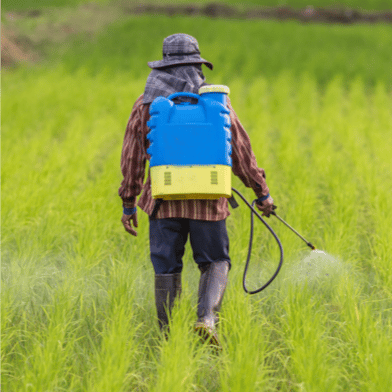Hardeman v. Monsanto: Is this the long-awaited next asbestos?
What are we to make of the recent headline-grabbing verdicts against Monsanto in the Hardeman and Johnson cases, $80 million and $289 million respectively? Is glyphosate the next asbestos? What did Praedicat’s estimates say about how to manage the risk of glyphosate when the litigation first emerged in 2016? What does Praedicat say about the risk today?
In Praedicat’s first release of CoMeta in January 2014, we featured 100 Litagion® agents. Among the first 100 was glyphosate, the active ingredient in Monsanto’s RoundUp, and the largest-selling herbicide in the world. In addition to RoundUp, glyphosate has been off-patent since 2000 and is used in 750 products in the United States.
In 2014, the highest risk harm for glyphosate was blood cancer, and specifically non-Hodgkin lymphoma, but while the risk was high and growing, it wasn’t high enough yet to support a sustainable mass litigation. A year later (in 2015), the International Agency for Research on Cancer (IARC) declared glyphosate to be probably carcinogenic in humans (2A), and two years after that, DeWayne Johnson won a $217M jury award in California (later reduced to $78M) for his lymphoma allegedly caused by exposure to RoundUp. This was recently followed by an $80M jury verdict for Edwin Hardeman in federal court in San Francisco. However, in terms of science, rather than continuing to grow, our assessment of the risk has been declining since there have been a number of negative human studies published, including ongoing evaluations of some 54,000 pesticide applicators in the Agricultural Health Study that have found no statistically significant correlation between glyphosate exposure and cancer.
What does Praedicat make of the overall picture for glyphosate? Here’s a review of the glyphosate story since the release of CoMeta in 2014.
- Glyphosate was agent #47 profiled by Praedicat in 2013 and one of the original 100 agents included in the release of our software CoMeta in January 2014. While Praedicat did not exist before 2012, back-testing the signal from the scientific literature shows that the early warning for glyphosate would have been apparent by the early 2000s.
- By the end of 2014, the glyphosate-lymphoma link in CoMeta had an estimated General Causation (GC) score of .47, with a projected risk of .65 by 2021, and a 90th percentile in excess of .80. The trajectory for this risk strongly suggested a high risk of future litigation. For a risk with these characteristics, Praedicat recommends aggregation management and movement toward named peril coverage.
- Since 2014, several studies have been published leading to a reduction in the general causation score of glyphosate to its current level of .27. These data are available to steer defendants toward defending claims instead of settling, and to appeal when a jury rules against them, as is the current strategy of Bayer.
- Since 2016, Praedicat has made available to its clients a glyphosate/lymphoma $15B extreme disaster scenario. Praedicat recommends running this type of extreme disaster scenario as part of a robust aggregation management strategy.
- Since 2014, while the science for lymphoma has moved away from acceptance of the risk, several new harms are emerging in a very active scientific literature. As a result, we currently project an expected loss of $731 million, and our 1% PML is $9.57 billion, which is highly risky but well within the capacity of the industry to manage and spread the risk. In other words, glyphosate is not the next asbestos.
- The two jury verdicts are still only early indicators of the direction of this litigation, while the science remains a strongly contrary indicator. Both verdicts have been appealed.
Many clients are asking us whether we recommend writing glyphosate today. Our suggestion is that glyphosate exposures within the primary CGL should be sub-limited, and possibly offered on an indemnity-only basis. Above the primary CGL sublimit, excess coverage should be on a named peril basis.
Like any modeling firm, Praedicat is actively monitoring the litigation to identify methodological changes that can improve the modeling. With this in mind, we suggest the following lessons learned:
- Praedicat plans to launch a defense cost model that will capture zero-indemnity, high defense costs losses before this assessment. We will launch this model at the end of Q2 of 2019. We anticipate it will increase the expected loss estimates for glyphosate, but not the tail loss estimates.
- Praedicat will also be releasing a new scenario incorporating “facts on the ground” learning from the recent findings.
- The broad range of findings within the glyphosate scientific literature can lead to dueling, “cherry-picked” scientific literatures, which increases defense costs, and increases the likelihood litigation begins. Once litigation begins, tail losses may increase due to the limited number of bellwether trials before precedent is established. These features will be incorporated into model updates in 2020, subject to empirical testing and external validation of the methodologies.

